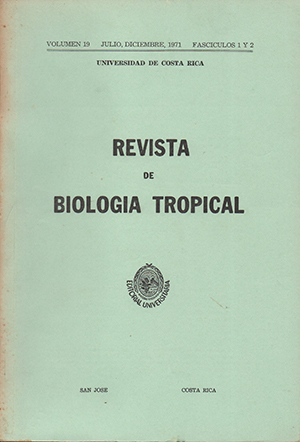Abstract
A comparative study of five species of cotton rats (Sigmodon) was carried out to diagnose similarities and differences in external morphology. These animals (a total of 610 individuals) were descendants of wild cotton rats from various localities in Mexico.
The growth rate of body dimensions can be divided into three categories: from 1 to 40 days there is a rapid increase in length in all body dimensions; from 41 to 100 days the increase is moderate and from 101 days to adulthood (200-400 days) there is practically no growth.
Regarding size, the five species can be divided into three groups: S. hispidus was represented by a population sample having large measurements and was the largest cotton rat studied. Sigmodon alleni and S. fulviventer were smaller and showed parallel growth rates. Sigmodon leucotis and S. ochrognathus were the smallest and showed similar patterns of growth. The differences found indicate that S. leucotis and S. ochrognathus are perhaps more remote from the supposed parent stock (presumably resembling S. hispidus). Sigmodon alleni and S. fulviventer, on the other hand, appear similar to S. hispidus in morphological development and thereby more closely related. When comparing morphological characteristics with the preferred habitats of the species, it was found that, whereas the three larger species prefer deep soils and abundant grass or shrub cover, the smaller and shorter-tailed species (S. leucotis and S. ochrognathus) live usually on shallow rocky soils on sparselyvegetated slopes, suggesting survival patterns.






